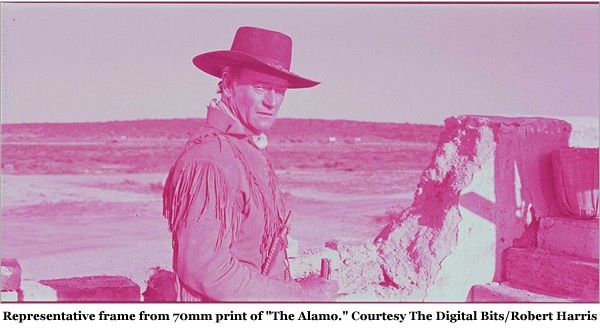
Film preservation is rarely a sexy endeavor, the fantasies of archivists themselves notwithstanding. Preserving or restoring a film often requires years of semi-scholastic drudgery—research, grant-writing, lab tests, hair-splitting assessments of continuity and color-timing. The reward at the end of the process is posterity—for the film, not the preservationist, who must be content with providing a sound bite on a DVD extra. (Bonus points allotted if the preservationist is shown at a messy desk, futzing with an ornery reel or holding it up to the light for inspection, like a fastidious jeweler.)
Point being, preservation work is a consummate behind-the-scenes job. On a certain level, that work should be invisible: if the goal is to return a film as close as possible to its original state, then eluding audience detection through seamless tradecraft is a mark of success. Hiding the gulf between disparate source elements and suppressing the ravages of time are laudable, essentially self-effacing, achievements. Film restoration hews closely to the physician’s Hippocratic Oath—first, do no harm. (By this standard, touting a new surround sound remix, digitally removing the intrinsic grain structure of the image, or valiantly intuiting a long-dead filmmaker’s unrealized intentions would automatically command suspicion, to say nothing of colorization, integration of new footage, and the like.) The highest compliment is not to be noticed at all.
The deliberations behind a restoration are even more obscure. They are almost always private and sometimes even proprietary: convincing a foundation that a particular film is culturally auspicious enough to merit underwriting its preservation, persuading a superior to allocate scarce discretionary funds to an emergency salvage project, negotiating a fair licensing agreement with a copyright holder. These are inherently delicate situations, so it’s no surprise that they don’t often unfold in the public square.
